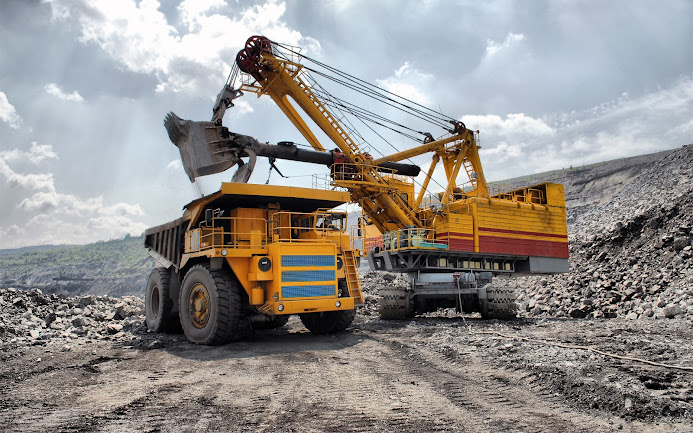Mining Equipment: Essential Tools for Resource Extraction
 |
| Mining Equipment |
Excavation Machinery
Mechanical excavators are critical for extracting rock and mineral deposits from the earth. Large excavators can remove massive amounts of overburden and waste rock to access resource-rich seams below the surface. Common excavating machines used in mining include load-haul-dump vehicles (LHDs), hydraulic excavators, backhoes, front-end loaders, and bulldozers.
LHDs are specialized off-road trucks used to transport rock between the working face and other equipment. Their ample load capacity and maneuverability make them well-suited for confined underground environments. Hydraulic excavators feature a digging arm and bucket to scoop loose materials. Backhoes and front-end loaders perform similar loading functions but are less durable for rugged job sites. Bulldozers clear terrain and push fragmented rock using a sturdy blade attachment. Together, these excavators form the fleet that uncovers and prepares mining deposits.
Drilling Rigs
Drilling rigs bore holes into rock or soil to enable blasting, assess mineral grades, and install ground support. Rotary blasthole drills are massive rigs that puncture patterns of precisely spaced holes for explosives. Diamond core drills extract intact cylindrical rock samples for geological analysis. Directional drills steer boreholes along predetermined underground paths. Handheld drills installed roof bolts, mesh, and straps to reinforce unstable tunnel ceilings. Constant drilling maintains the advancing limits and interior reinforcement of excavations.
Hauling Trucks
Once rock is loosened by excavation and drilling, heavy-duty haul trucks transport material both within and exterior to Mining Equipment sites. Dump trucks come in diverse sizes, from 30-ton capacity vehicles up to 400-ton behemoths. Their sturdy designs withstand grueling conditions carrying fragmented rock over long distances. Some sites employ off-highway trucks that transfer ore between pits and primary crushers or stockpiles. Rail systems use locomotives to haul longer train consist of ore cars when economical. Regardless of platform, reliable haulage maintains productive material flows.
Crushing Equipment
Rock that is too large for further processing must first be reduced in size by crushing machines. Jaw crushers, cone crushers, rolls crushers, and impactors break apart oversized stones by compression, impact, or shear forces. Primary crushers robustly fractured rocks lifted directly from excavations. Secondary and tertiary crushers progressively grind material to finer particle sizes suitable for separation or extraction. Mobile crushers set up temporarily near active pits save on haulage costs. Stationary crushing circuits located near processing plants feature heavy constructions for maximum throughput. Effective comminution prepares ore for downstream value-recovery operations.
Material Handling
Moving large volumes of broken rock, ore, waste, and tailings requires robust material handling solutions. Bucket wheel reclaimers extract stored piles, feeders regulate input to crushers and mills, conveyors transport products between process stages, and stackers pile final materials.stackers pile final materials. Stacker-reclaimers combine stacking and reclaiming into single machines to optimize stockyard footprints. For underground mines, shuttle cars shuttle cars transport ore and waste within confined levels. To reduce dust and spillage, fully enclosed systems maintain material confinement. Automated control and precise stock management optimize material flows.
Mineral Processing
After mining and initial size reduction, mineral processing extracts and concentrates commercially viable components from gangue. Gravity separation exploits differences in specific gravity to separate heavy valuable minerals from lighter waste. Thickening and filtration dewater mineral slurries for downstream handling or disposal. Flotation cells agitate finely ground ore with frothing reagents to float off desired valuables. Magnetic separators capture ferromagnetic ores while discarding diamagnetic tailings. Finally, leaching dissolves minerals from crushed ore using aqueous chemicals to recover metals through further refining. Careful circuit design recovers maximum value from limited orebodies in an environmentally responsible manner.
Get more insights on Mining Equipment


%20Treatment%20(1).jpg)
Comments
Post a Comment